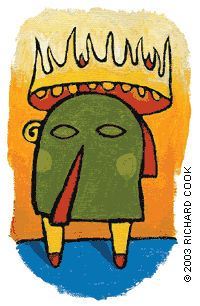
Lighten your load before it leads to burnout.
Fam Pract Manag. 2003;10(3):76

Find a sapling in the woods. Bend it, then bend it further and then a little further still. When you hear it crack, take your hand away and you’ll see that the sapling stays bent. That’s burnout. It happens to physicians all the time, but the best approach is to prevent burnout before you reach your breaking point. Here’s how:
Understand why it happens
Progress keeps giving us more options and advances at exponential rates. We have more technology, more labor-saving devices, more affluence and more information than ever before, but we are stuck with human limits and 24-hour days. Progress has put us on a collision course with our limitations. And when you’re hard driving – as physicians generally are – it’s difficult to acknowledge that we only have a certain amount of physical strength and mental capacity. In medicine, stoicism has long been the order of the day.
Recognize the symptoms
There is very little scientific information published about the upper end of human limits. What we do know is that there are only so many details that each of us can handle. If you chronically exceed that number, overload occurs. Some common symptoms include apathy, work dread, irritability, hostility, disorganization, mistakes, headaches, GI problems, eating disorders, sleeping disorders or broken relationships. Unfortunately, many of us ignore these early warning signs, embarrassed that our limitations are a sign of weakness or human failure.
Respect your limits
If you’re chronically overloaded and working beyond your human limits, you’re not going to survive long. Or, if you do survive, you’re not going to be a happy person emotionally and professionally. You’ll lose your passion and your caring and your service. An alternative is to create “margin” in your life. Margin is the space between your load and your limits. If you’re overloaded, by definition you have no margin. There has to be some time in your life for healing and restoration, time to nourish your relationships, take a deep breath and get your batteries recharged. Of course, there will always be times when you can’t avoid working beyond your human limits, but you can learn to recognize those times and then take responsibility for introducing some margin into your life.
HOW TO CREATE MARGIN
Unclutter. If you have a pile of medical journals more than 12 inches tall, save the top inch. Throw the rest away. Anything important is going to show up in the next round of journals.
Learn to say “no.” We live in a land of saturation. When you say “yes” to something, it means you have to say “no” to something equally time-consuming.
Adjust your expectations. If you expect a perfect world, you are setting yourself up to be frustrated and annoyed when it isn’t. For example, our patients are who they are. They won’t always fit in 15-minute time slots.
Tame technology. Use “time-saving” technologies when they’re helping you and turn them off when they’re hurting you.
Simplify. Everything you own owns you. If you buy too much, you will have too much debt and spend your life working too hard to pay off what you don’t have time to use.
Take personal responsibility
Many people slide along from event to event and avoid making tough choices or holding themselves personally accountable for their lives. If you let it, the world or your patients or our culture will set your agenda for you. Instead, take control. For example, everyone can choose to turn off the television. When we talk about burnout, we often focus on work, but a lot of marginlessness comes from people’s home lives. If you stayed up until 1:00 a.m. watching a movie, got only a few hours of sleep and fought with the kids before you left the house, you’re already exhausted before you even started the day at work. Better choices could have prevented this.
Pace yourself
There are those of us who can’t keep cranking it up anymore because we are already maxed out. To admit we have breaking points is not a sign of failure. Rather, it is the first step toward getting off the treadmill and heading in a more meaningful life direction.